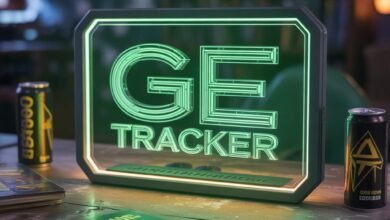Unlocking the Power of AI Image Prompt Technology for Creative Excellence

In today’s fast-paced digital landscape, AI technology is making waves across industries, particularly in the creative sector. AI image prompts are one of the most exciting developments in the creative space, offering professionals and enthusiasts the ability to generate stunning visuals effortlessly. This article dives deep into the world of AI image prompts, exploring their potential, benefits, and how they are revolutionizing creative processes.
What Are AI Image Prompts?
AI image prompts are short descriptions or instructions that guide AI models to generate images based on specific criteria. These prompts act as the starting point for AI-powered image generation tools like invideo AI, which leverage machine learning algorithms to create visuals, ranging from simple graphics to highly complex illustrations. Unlike traditional design methods, AI image prompts simplify the creative process, reducing the time and effort spent on manual creation while still delivering high-quality results.
How AI Image Prompts Are Changing the Creative Industry
The creative industry, which includes sectors such as graphic design, art, advertising, and media, has traditionally relied on human creativity for visual production. However, AI image prompts are transforming this landscape by automating the creation of images and providing artists with an efficient tool to bring their ideas to life.
- Efficiency and Speed: One of the primary advantages of AI image prompts is the speed at which visuals can be generated. By simply inputting a few descriptive keywords or phrases, AI can produce an image in minutes, significantly reducing the time needed for brainstorming, drafting, and finalizing visuals.
- Endless Creativity: AI models trained on vast datasets can come up with new ideas and concepts that might not have been considered by a human creator. This opens up endless possibilities for artists, allowing them to explore styles, color schemes, and compositions they may not have envisioned on their own.
- Customizable Results: While AI image prompts generate images based on input criteria, they also offer customization options. Creators can adjust the output by fine-tuning the details, ensuring that the final image aligns with their vision.
Key Applications of AI Image Prompts in Different Industries
- Graphic Design: Designers can use AI image prompts to generate logos, website graphics, social media posts, and other digital assets quickly and efficiently. By simply describing the desired design elements, they can receive multiple image variations, saving both time and resources.
- Advertising and Marketing: AI-generated visuals are perfect for crafting attention-grabbing ads and promotional materials. By inputting keywords that describe the product, service, or concept, marketers can generate multiple creative options for campaigns, making it easier to find the most effective visual representation.
- Fashion and Product Design: Fashion designers and product creators can use AI image prompts to visualize their concepts before physical production begins. By inputting descriptions of materials, colors, and styles, AI tools can generate realistic renderings that help designers make informed decisions.
- Entertainment and Media: The entertainment industry can leverage AI image prompts to create storyboards, character designs, concept art, and even backgrounds for animated films or video games. This not only speeds up production but also enables new creative possibilities by offering a fresh perspective on visual concepts.
- Art and Illustration: AI image prompts are making waves in the art world as well. Artists can use them to explore new styles, experiment with color palettes, or even recreate famous artistic techniques. This allows for a dynamic and experimental approach to art creation, blending human creativity with AI innovation.
The Technology Behind AI Image Prompts
At the core of AI image prompt technology lies machine learning and deep neural networks, which are trained on massive datasets of images and their associated metadata. These models learn to recognize patterns and relationships between visual elements, allowing them to generate images that align with given prompts.
- Generative Adversarial Networks (GANs): GANs are often used in AI image generation. These networks consist of two components: a generator, which creates images, and a discriminator, which evaluates the quality of the generated images. Through repeated training, the generator improves its ability to create realistic visuals.
- Transformer Models: Transformer-based models, such as OpenAI’s DALL·E, are becoming increasingly popular for generating images from text prompts. These models are trained on vast amounts of data and are capable of producing highly detailed images by interpreting textual descriptions with remarkable accuracy.
- Style Transfer Algorithms: Some AI image generators use style transfer algorithms to apply specific artistic styles or techniques to images. This allows for the creation of visually compelling artwork that mimics the style of famous artists, movements, or genres.
Benefits of Using AI Image Prompts
- Cost-Effective: By automating the process of image creation, businesses and individuals can reduce costs associated with hiring graphic designers, illustrators, or photographers. AI image prompts enable users to generate high-quality visuals on demand, without the need for expensive resources.
- Increased Productivity: AI-generated images can be produced quickly, allowing creators to focus on other aspects of their work. With AI tools, designers can generate multiple variations of an image in a fraction of the time it would take to manually create them.
- Accessible to Non-Experts: AI image prompts democratize creativity by making it accessible to individuals with little or no artistic experience. Anyone can generate visually appealing content by simply describing what they want, empowering more people to explore their creative potential.
Challenges and Limitations
Despite the numerous benefits, AI image prompt technology is not without its limitations. While AI can generate impressive visuals, it still lacks the nuanced understanding of human creativity and context. This can sometimes result in images that, while visually striking, may not align with the deeper message or emotion a creator intends to convey.
Additionally, AI image prompts can sometimes produce generic or repetitive results, particularly if the prompts are too vague or lack specific details. For optimal outcomes, users must carefully craft their prompts to ensure that the generated images meet their expectations.
Conclusion
AI image prompts are undoubtedly revolutionizing the creative industry by providing a powerful tool for generating stunning visuals quickly and efficiently. Whether in graphic design, marketing, fashion, or entertainment, the technology is opening up new possibilities for creativity and innovation. By embracing AI image prompt tools, creators can unlock a new level of efficiency, productivity, and imagination, ultimately shaping the future of visual content creation.
As this technology continues to evolve, we can expect even more sophisticated AI tools that push the boundaries of what’s possible in the creative world. The future of visual storytelling is bright, and AI image prompts are at the forefront of this exciting journey.




